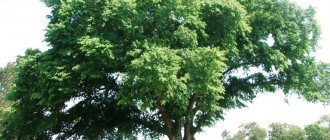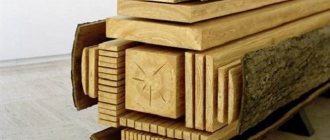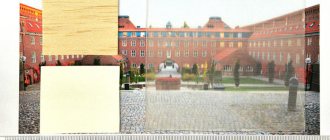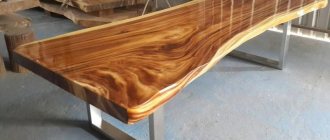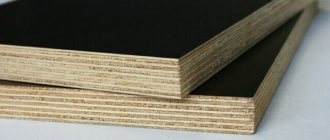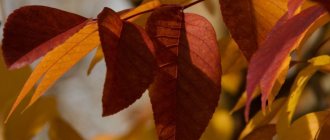Maple wood is a practical material that is valued by lovers of beauty and true aristocrats. It is useful and beautiful, which is why many people prefer it and choose furniture, stairs and various beautiful elements made from this wood. Thanks to its unique advantages, the material will serve for a long time without losing its properties and visual appeal.
The article will discuss what properties maple sawing material has, as well as whether it is worth buying this type of raw material for home design or construction. It's no secret that wood is the main material for the production of high-quality furniture, but is maple wood suitable for frame construction? You will learn these and many other facts regarding maple wood while reading the article. You will receive answers to your questions and will be able to move further in your study of wood species.
Wood Density
When buying wooden furniture, we can sometimes see that the description contains information about the density of the wood. Unfortunately, not all buyers understand the meaning of the written numbers. However, this is important, because this information helps to select the necessary furniture items, depending on the type of room.
Before purchasing a wooden product, you should decide what density is. Why is this characteristic so important? The density of maple wood is the ratio of mass to volume. The heavier the cubic meter of wood, the denser it is. The density of wood directly depends on humidity. If the same piece of wood is exposed to different operating conditions, its density will change.
Please note that European maple has a density of 0.65 g/cm3 and a hardness of 3.6 g/cm3. These are average values that allow maple to be used so widely in the national economy.
Its hygroscopicity and strength depend on the density of wood. Dense wood is more durable.
Why is the false sycamore maple called sycamore?
According to the legends of the ancient Slavs, a person was turned or “sworn” into this tree. Therefore, maple is never used to heat a stove, nor is it used to make coffins, considering it a great sin to place living people in the ground.
A man turned into a sycamore because of a mother’s curse on her disobedient children. When the musicians pass by a maple tree, they cut it down and make a violin. Its sounds, in the voices of children, tell how their mother committed a crime in front of them.
The Serbs have a different belief. A dry maple tree will turn green if it is hugged by a person who has been wronged unfairly. And, conversely, a green maple will dry out if a deeply unhappy or offended person touches it.
Application area of maple wood
Wood is used in the furniture industry, making parquet, musical instruments, skis, chess pieces and cladding panels. Its use has become popular in ancient times. In the old days, this material was used to construct carts, baking tins, oars, cutlery and much more. Musical instrument bodies made from maple sound and look great.
Maple is grown specifically for its wood because it is easy to process. This is a suitable material for making stairs and railings; maple wood is also used to decorate rooms. Woodcarving enthusiasts choose maple as their sawing material because it is highly resistant. This feature allows you to make the thinnest cuts without splitting. Elements made from this material differ from other products by the presence of charm, uniqueness and sophistication.
For many centuries, maple wood has been used for decorative and applied arts such as intarsia. Experts select multi-colored wood and cut it into thin strips. In this case, it is necessary to remove areas with defects. Then the tapes are glued and mosaics are cut out, creating a pattern.
Diseases and pests
White maple greens are often affected by coral spotting. The leaves are covered with burgundy spots. It is better to immediately cut out and destroy diseased areas, and coat the cut areas with garden varnish. It is advisable to disinfect the tool before starting and after finishing work. To prevent fungal diseases, tree crowns need to be sprayed in the spring with Bordeaux mixture or copper sulfate solution.
Of the harmful insects, sycamore is afraid of maple weevils, whiteflies, and mealbugs . It is recommended to cut out and burn damaged leaves and shoots along with larvae. Sick trees must be sprayed with Ammophos, Karbofos, Nitrafen. To prevent infection by parasites, it is advisable to carry out treatment at the end of winter, before the buds open.
Use in garden design
Maple wood, pre-treated against rot, is ideal for creating gazebos, patios, railings, and elements for playgrounds.
This material makes excellent garden furniture - tables, benches, stools.
It is also suitable for all kinds of decorative crafts that can be used to decorate the area.
Secrets of planting and care
Regardless of the variety, the Pseudoplatan maple prefers open, sunny places and does not develop well in the shade. When planting white maple or sycamore, choose fertile soils that are well moistened and drained. The tree is planted away from buildings.
When planting in a row, maintain at least 2-3 m between the trees. The hole for planting is prepared in advance, 2-3 weeks in advance, so that the ground settles. After planting, a couple of days later, the tree trunk circle is sprinkled with an additional layer of earth.
Caring for false sycamore maple is not difficult. Young plantings are watered regularly, the tree is moisture-loving. After watering, the tree trunk circle is loosened and weeded.
New plantings are protected from frost (from minus 15-20C) with spruce branches and agro-fabric; an adult tree does not need such protection.
Sycamore is pruned annually, removing old, dry, broken branches. In spring, adjust the shape of the crown as desired. The tree trunks are regularly mowed down.
Species diversity
There are many different types of this tree in the world, but the most common of them is Norway maple. It is not difficult to meet this species, because maple grows in lowland forests. This tree is easy to distinguish from other species. Representatives of the genus grow up to thirty meters in height and have a dense crown, similar to a tent.
Among the maples there are also giants, for example the velvety one. It grows up to fifty meters. Sycamore grows a little smaller (forty meters in height). This representative is found in the mountain forests of the Caucasus. The following types of maple are also found:
- Hornbeam.
- Prirechny.
- Manchurian.
If we talk about varieties, there are also a lot of them, for example:
- Crimson King Norway Maple. It has a spreading crown and large leaves.
- Atropurpurea false maple. It is distinguished by a wide cone-shaped crown and beautiful five-pointed leaves.
- Flamingo Ash Leaf Maple. A tree of modest size, very beautiful with variegated leaves. It is used to create a variety of compositions.
- Wieri – picturesque, silver maple.
- Fast growing Royal Red. This is a Norway maple, has a wide crown similar to a cocoon.
Red fan maple (Acer palmatum 'Osakazuki')
Trees of this variety are characterized by short growth, the maximum height of which does not exceed 4 m. The plants form a spherical crown shape and have an average growth rate. The tree is decorated with red shoots, which indicate that the stem is young. Mature stems acquire a rich green color. In autumn, the leaves turn red, which gives the tree a very decorative appearance. Maple blooms in racemose inflorescences collected from small yellowish flowers. Trees grown in cold climates or in shady conditions do not bloom. Due to the fact that the root of the plant is located in the upper layers of the soil, the crop needs regular moisture. This variety is frost-resistant and wind-resistant. It reproduces using winged seeds, which are carried by the wind over large areas.
American maple wood: features
Many types of maple grow on the American continent. Some of this list can be found on other continents, for example, ash maple, whose wood is very popular. This species is often called a “killer” because it is aggressive and inhibits the growth of other plants.
Since American maple wood is not very durable, it is used to make dishes and other household items. And from its curved and twisted branches they make parts for decorating a room, various vases for flowers, sculptures and handles for bladed weapons. In many countries, American maple wood is used to create furniture, interior doors, parquet and bowling alleys. The color of the wood depends on where the maple grows. Most often it is light brown and has a red tint. It has a uniform texture, which is sometimes decorated with curls.
American maple wood takes a long time to dry, but is easy to process. It also adheres well, polishes, and is coated with paints and varnishes. The advantages of wood include good flexibility, wear resistance and accessibility.
Naked maple (Acer glabrum)
Maple propagation by cuttings
The country of origin of this species is North America. The trees are not tall, their height does not exceed 10 m. The circumference of the crown is equal to a meter. The plant is characterized by high growth rates when young, but as it matures, the growth rate decreases. This species is characterized by a complete lack of flowering. It can tolerate high frosts and is often grown in northern regions. The leaves are 3 or 5 lobed, colored light green or light green. The leaf length is about 12 cm. It is propagated by seeds, which are able to maintain germination for about two years. With the help of lionfish, seeds are carried by the wind over large areas and germinate, forming dense plantations.
Properties of wood
Among hardwoods, maple wood is considered the most valuable and useful. Products made from maple wood are easy to recognize, since its beautiful core rays are immediately visible. The main properties of this material:
- Flexibility.
- Beautiful colour.
- Wear resistance.
- Hardness.
- Strength.
As wood is steamed, its color changes. This is a very interesting feature. However, drying the material requires care. It is necessary to choose the optimal mode, since the wood can dry out and become deformed.
Maple
Heavy, hard, dense and durable fine-pored maple wood has a beautiful pattern with narrow dark core rays, which gives it a special decorative effect. Maple wood was used in carpentry to produce bent furniture, musical instruments, mathematical instruments, skis, and gun stocks. Bowling pins and baseball bats are made from sugar maple.
When dried, maple board is quite stable, mainly when used for interior decoration. Maple wood material can be easily processed, polished, painted and covered with stain or varnish without any problems.
The main industry for using maple wood is interior decoration and furniture making. Most often used as a contrasting wood in the form of edging and finishing strips. Today, maple wood is used for interior finishing of high-quality furniture.
In the furniture industry, maple is used in the form of lumber or veneer. Maple parquet is very valuable and is highly resistant to abrasion.
Maple edged boards are characterized by an attractive texture of a pinkish or yellowish tint. Lumber from this tree perfectly holds fastening elements (nails, shurps) - in this indicator they are not inferior to such hardwood species as ash, oak, and beech.
Laminate Maple perfectly emphasizes the natural color of wood. The light, in some places even light brown, base tone is intersected by thin dark veins. This pattern visually expands the space, giving it a feeling of lightness and sophistication. The room in which this laminate is installed will look much lighter and fresher.
Areas of application of maple
Among hardwood species, maple wood is considered one of the most valuable. Masters have long treated it with respect. For example, the Trojan horse, known from Greek mythology, was made by the Greeks from maple. Its use is limited only by its low biostability and tendency to change color. The last drawback can be eliminated by using various mordants and stains.
Maple wood is used to make furniture. Well dried, it exhibits good stability of shape and size indoors, so one of the most popular products made from it are countertops, in particular for restaurants and cafes. Together with other valuable species, it is used for inlays as contrasting details. It combines well with oak and fruit species (cherry, pear, apple), and it combines well with beech if parts from these species do not directly touch. Combines with metal and glass parts.
For finishing parts made from less valuable species, sliced maple veneer is widely used. Especially appreciated are the wavy texture, maple burl veneer and bird's eye texture.
Maple parquet is especially valued for its high hardness and wear resistance. American sugar maple is used to make floors in dance halls, bowling alleys, etc.
Maple is very good for making stairs and interior decoration parts.
Veneer and maple wood itself are used for finishing and making musical instruments - percussion, wind and strings - due to their high resonant properties. The great masters from Cremona, Andrei Amati, Antonio Stradivari, and Giuseppe Guarneri, made some parts of their famous violins (for example, lower decks) from Norway maple wood. Maple is an excellent material for carving. It is highly resistant to chipping, so very thin cuts can be made on its wood, and the cuts are crisp, clean and smooth, with a soft glossy sheen. Moreover, they can be done in any direction, with almost no fear of chipping. Maple was widely used for crafts and kitchen utensils - spoons, ladles, carved and turned vessels. It is used to make oars, tool handles, hand plane blocks, measuring and drawing tools.
| Scientific classification | Physical properties | ||
| Domain: | Eukaryotes | Average Density: | sycamore 623 kg/m³ Norway maple 653 kg/m³ |
| Kingdom: | Plants | Density limits: | sycamore 530–790 kg/m³ Norway maple 560–810 kg/m³ |
| Department: | Flowering | Longitudinal shrinkage: | 0,4–0,5 % |
| Class: | Dicotyledons | Radial shrinkage: | sycamore 3.3–4.4% Norway maple 3.2–4.9% |
| Order: | Sapindaceae | Tangential shrinkage: | sycamore 8.0–8.5% Norway maple 8.4–9.0% |
| Family: | Sapindaceae | Bend strength: | Norway maple 114–137 N/mm² |
| Genus: | Maple | Compressive strength: | sycamore 82 N/mm² Norway maple 100–155 N/mm² |
| International scientific name | Tensile strength: | sycamore 58 N/mm² Norway maple 59-62 N/mm² | |
| Acer L., 1753 | Thermal conductivity: | sycamore 0.16–0.18 W/km Norway maple 0.14 W/km | |
| Type species | Fuel properties | ||
| Acer pseudoplatanus L. - Sycamore | 3.75 to 4.1 kWh/kg | ||
Types of maple
Four species grow in the European part of Russia:
- Tatarian maple ( Acer tataricum
L.), - White maple, or pseudoplatan maple ( Acer pseudoplatanus
L.), - Field maple ( Acer campestre
L.) - listed in the Red Book of the Moscow region, through which the northern border of its range passes, - Norway maple ( Acer platanoides
L.),
of which only the last species is widely distributed (to the north - up to 62°).
In the Russian Far East there are:
- Small leaf maple ( Acer mono
), - River maple ( Acer ginnala
), - False maple ( Acer pseudosieboldianum
), - Birch maple or yellow maple ( Acer ukurunduense
) - in Primorye and Amur region, - Greenbark maple ( Acer tegmentosum
) and - Manchurian maple ( Acer mandshuricum
) - mainly in Primorye, - Japanese maple ( Acer japonicum
) - in the Kuril Islands (Kunashir), - Bearded maple ( Acer barbinerve
Maxim.), - Chonoski maple ( Acer tschonoskii
Maxim.) - the south of the Sakhalin region, its subspecies Komarov maple grows in Primorye, - Acer palmatum
Thunb. - in the Primorsky Territory, a microsiebold maple was found, close to the palmatum thunb. and considered by a number of scientists to be part of the latter.
In Crimea, only the following are known:
- Acer campestre L.,
- Acer valuum Lauth. (Acer opulifolium Vill.),
- Acer platanoides L.,
- Steven's maple ( Acer stevenii
Pojark).
The Caucasus is very rich in maple species - in addition to the European species listed above, the following are also found here:
- Trautvetter's maple, or highland maple ( Acer trautvetteri
Medw.) - Acer velutinum Boiss. — the species has not been recorded in Russia,
- Acer hyrcanum Fisch. et CAMey. — Azerbaijan and Dagestan,
- Montpelian maple ( Acer monspessulanum
L.), - Colchis maple ( Acer cappadocicum
Gled.), - Sosnowsky maple ( Acer sosnowskyi
Doluch.) - included in the Red Book of the Krasnodar Territory.
Useful tables
Shrinkage
| Very low | Low | Average | High | Very high |
| Tangential | ✓ 6.0 | |||
| Radial | 3 — 4 | |||
| Volumetric | 11.9 % |
Voltage
| Structural No. 1 | Structural No. 2 | Structural No. 3 | Structural No. 4 | Structural No. 5 | |
| Not dried | |||||
| Dried | F22 | F17 | F14 | F11 | F8 |
Standard Density
| Not dried | 0 kg/m³ |
| Dried | 705 kg/m³ |
Mechanical properties
| Torsional strength (dried) | 108.941 |
| Modulus of elasticity (dried) | 12.618 |
| Maximum compressive strength (dried) | 53.998 |
| Hardness (dried) | 6.450 |
Material color palette
Furniture made from maple wood has a light brown tint. Most often, large structures are made from it, such as a chest of drawers or a wardrobe. Large, light-colored furniture visually expands the space, making it lighter and more comfortable. The light brown color goes well with dark upholstery and a variety of large elements. Maple parquet looks advantageous because it produces a shade that is pleasing to the eye. Moreover, it is strong and durable.
The color of maple wood changes after the stained raw material dries. Over time it brightens. Natural breed always remains light and uniform.
European maple wood looks very light, but takes on a yellowish tint after varnishing, and when treated with oil it acquires an amber sunny tint. This cannot be said about hard maple, the whitish color of which barely changes noticeably after treatment with paints and varnishes. The wood of sugar and red maples is highly prized. It has a light brown tint, is durable, and easy to process.
Name
In Scotland, sycamore is known by the confusing name sycamore.
Sycamore Darnley trunk
The name "sycamore", often applied to the white maple, especially in English-speaking countries, originally belongs to the species Ficus sycomorus
L.), growing in Southeast Asia (this is probably the sycamore, or sycamore, a plant related to the fig tree, which is mentioned in the Bible); later it began to be applied to the sycamore described here and to some other trees (see also Sycamore) due to some apparent similarity in the shape of the leaves.
Use of wood in the furniture industry
Maple wood is very often chosen for making furniture. This material produces high-quality and visually attractive furniture, since it has virtually no flaws. Maple wood is used to make cabinets, beds, chairs and tables. A competitor to maple in the furniture industry is boxwood, but it has a fairly high density, so products made from it are heavier.
Wood of different colors is used in production. Tabletops made from solid maple are especially valued, but more often it is used as decorative veneer.
Style
Maple products will fit perfectly into any interior. The plasticity of wood allows us to make furniture in a variety of colors and shapes. Most often this material is used in the following styles:
- Baroque - implies a rich, elaborate interior. The rooms, decorated with decorative elements, are complemented by the splendor of furniture of the most bizarre shapes. It is this that plays the leading role and attracts the eye. For furniture in the Baroque style, maple is painted dark and the wood texture is highlighted.
- Empire style is another decorative style. Coming from France in the 19th century, it is distinguished by its richness and abundance of detail. Empire style maple furniture is distinguished by symmetry, massive shapes, floral patterns and a large number of mirrors. Part of the decor can be made using bronze or gilding.
- Classic – considered universal. Strict, elegant beds, wardrobes, and tables made of maple will easily fit into any environment and add sophistication to the interior. No paint is used when decorating, so the wood most often retains its natural shade.
- Modern – characterized by spaciousness and a lot of light. Furniture made in this style is functional, simple, and goes well with any decoration.
Algorithms for creating wicker furniture with your own hands, tips for beginners
Thanks to its versatility, maple can be used in almost all styles. It easily changes color as well as shape, helping the designer get the desired result.
Maple furniture looks best in a modern interior decorated with contrasting shades.
Baroque
Empire style
Classical
Modern
Benefits of Maple Wood
Maple wood is a fairly affordable material. In addition, it has a number of advantages:
- Durability and reliability.
- Long service life.
- Simple and easy repair in case of breakdown of a product made from it.
- The ability to design beautiful high-quality furniture and many household items.
- Eco-friendly and natural.
- Uniformity of color from the center of the trunk to the periphery.
- During operation it does not form cracks or splinters.
- Relatively low price.
The main advantage of wood is, of course, its environmental friendliness and naturalness. Furniture made from natural raw materials has been in great demand for many years.
Since the material is durable, this has a positive effect on the service life. Products for the production of which high-grade wood was used are of excellent quality; they are not susceptible to contamination by various microorganisms. Other features of maple wood:
- Has excellent acoustic properties.
- Resistant to the negative effects of aggressive chemicals.
- It has low thermal conductivity.
When using wood, it is necessary to take full advantage of its positive qualities and protect the material from the negative effects of various factors.
Criterias of choice
Maple furniture can last for decades, but to do this you need to choose a quality product that will meet all standards. Before purchasing, you need to pay attention to the following factors:
- Drying method, which affects the quality of wood. If this process is not performed correctly, the material will become weak, brittle and will soon crack.
- Quality certificates. Their presence indicates the correct processing process and the integrity of the manufacturer.
- Quality of fittings.
- Type of material of shelves, internal walls. When it comes to cabinets, chipboard is often used to make these parts, which reduces the cost of production.
- The quality of the joints - they must be polished, without gaps or irregularities.
White maple wood is often used in furniture production. Tables, cabinets, beds, bedside tables and countertops are made from it. When properly processed, the material retains its strength for many years without losing its beauty.
Drying method
Quality certificates
Quality of fittings
Material type
Quality of joints
Disadvantages of wood
Experts see only one significant drawback of this wonderful material - it is susceptible to rotting. However, this property is not limited to maple wood. To prevent rotting from occurring, the material must be treated with special protective agents before use, the most effective of which is PSB.
Maple wood is widely used in many countries around the world. It is especially popular in Canada and the USA. Thanks to its strength, beautiful shade and extraordinary beauty, maple wood has remained in great demand for many years.
Caring for White Maple
Among the advantages of the pseudo-sycamore maple is that it tolerates heavy pruning and shaping, but it is not recommended to do this in the fall. Also, maple perfectly adapts to the microclimate of large cities, feels good in an air environment polluted by smoke and dust, so the sycamore maple tree can decorate not only the central alleys and parks of the city, but also its industrial areas.
- White sycamore maple 1.5-2 meters high - price 900 rubles per seedling.
- Sycamore maple 3-4 meters high - cost 6,000 rubles per tree.
Our plant nursery is engaged in the cultivation, sale, and planting of white sycamore maple seedlings. We also deliver plants throughout Russia.
